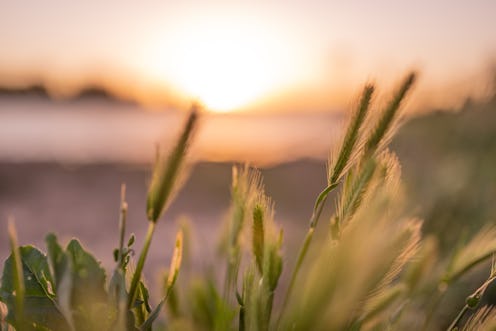Life
What Is The Shortest Day Of 2016?

This may surprise you, but the shortest day of the year is actually rapidly approaching. So, when is the shortest day of 2016? Don't worry about marking your calendars, because it's actually already marked: Wednesday, Dec. 21, otherwise known as winter solstice, which is marked on every calendar pretty much ever. That's why it's marked! And yes, in case you're wondering — this does mean that the longest day of 2016 is the summer solstice, which was on June 20 in 2016.
To clarify, days are calculated based on the hours between sunrise and sunset. Nevertheless, since our planet is on an axis, different cities are experiencing different length of days all year round. When the earth makes its trip around the sun, that means the sun isn’t directly hitting the same spot all the time, but hits different parts of the earth throughout the year.
The shortest day means that the sun has reached the southern-most point during all 365 days of the year, which means the earth is experiencing the least amount of sunlight during that day. So vice versa, the longest day means the sun has reached the northern-most point, experiencing the most sunlight that day compared to the others in the year.
This, of course, means that different countries are seeing different hours of daylight exposure due to the sun’s positioning. The reason Dec. 21 is counted for the shortest day of the year is because, overall, the amount of hours the earth sees sunlight is at its lowest point. For example, Thule in Greenland (the northernmost city) will see no hours of sunlight on Dec. 21, while Puerto Williams in Chile (the southernmost city) will see 17 hours and 22 minutes of sunlight. On the flip side, during the longest day of the year, Thule will see 24 hours of sunlight, while Puerto Williams will see seven hours and 11 minutes.
Basically, it depends on latitude. For those in Puerto Williams, the “shortest day of the year” overall is actually the day that they see the most sunlight. Their actual shortest day of the year is on what we consider the longest day of year, or summer solstice. This is also the same case for any cities or countries located below the equator line. The equator line actually runs through La Concordia, Ecuador, whose shortest and longest days of the year are exactly the same: 12 hours and 7 minutes. La Concrdia sits around the same time table (aka very closely accurate sunrise and sunset times) all year round.
So what about the United States? Since the country is above the equator, that means that the shortest day and the longest day do apply to us as they're supposed to. On the shortest day, New York City will experience 9 hours and 15 minutes of sunlight, and on the longest day, it experiences 15 hours and 6 minutes. However, since Los Angeles is closer to the equator, their shortest day is actually longer than New York’s by about 30 minutes — 9 hours and 45 minutes — while their longest day is only 14 hours and 26 minutes.
Now, I’m sure you’re wondering, what does this mean for you? Of course the days have been getting shorter, and sunset comes way too quickly, but there are some ways to go about spending the shortest (and you could even say the darkest) day of the year.
One in particular is the celebration of winter solstice that actually happens through the Catholic church. Some churches come together to celebrate winter solstice because, well, they want to experience light and happiness amidst the darkest days of the year. The Cathedral of St. John in particular, located in New York City, hosts a three-day event in order to celebrate the spirit of the holidays — which makes sense since the message of Christmas is how a light came into a dark, dreary world.
Even if you aren't religious their way of celebrating the darkest day of the year can be kind of inspiring. Instead of huddling up all by your lonesome during the shortest day of the year, light some candles, hang out with friends or family, and make it a celebration.
Images: Carlos Mir/Moment/Getty Images; Giphy (2)